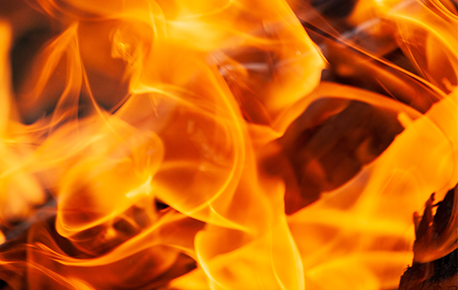Runaway reactions are exothermic reactions that produce a lot of heat. In some cases, they can produce so much heat that they cause an explosion or fire. These types of reactions can occur in a variety of situations, including chemical manufacturing, petrochemical processing, and transportation of hazardous materials. Understanding how runaway reactions occur and how to prevent them is crucial for maintaining safety in these industries.
In this article, we will explore the topic of runaway reactions and temperature. We will look at how temperature affects the rate of chemical reactions, the conditions that can lead to runaway reactions, and the strategies that can be used to prevent them.
Temperature and Reaction Rates
Temperature is one of the most important factors that affect the rate of chemical reactions. In general, increasing the temperature of a reaction will increase the rate of the reaction. This is because the heat energy provides the reactant molecules with more kinetic energy, which allows them to collide more frequently and with greater force. This increased collision rate and energy will lead to a faster reaction.
The relationship between temperature and the reaction rate is described by the Arrhenius equation, which states that the rate constant of a reaction increases exponentially with increasing temperature. The equation is given by:
k = A*e^(-Ea/RT)
where k is the rate constant, A is the pre-exponential factor (which depends on the nature of the reaction), Ea is the activation energy required for the reaction to occur, R is the gas constant, and T is the absolute temperature. The exponential term in the equation indicates that a small increase in temperature can have a large effect on the rate of the reaction.
However, increasing the temperature of a reaction can also increase the likelihood of a runaway reaction. If the heat generated by the reaction is not dissipated quickly enough, the temperature can continue to increase, which will lead to an even faster reaction. This positive feedback loop can quickly spiral out of control and result in an explosion or fire.
Runaway Reactions
A runaway reaction is a type of chemical reaction that produces heat at a rate that exceeds the rate at which the heat can be dissipated. As a result, the temperature of the reaction increases rapidly, which leads to an even faster reaction. This positive feedback loop can quickly lead to an explosion or fire.
There are several conditions that can lead to a runaway reaction. One of the most common is a loss of cooling. In many chemical processes, cooling is used to remove heat from the reaction. If the cooling system fails or is overwhelmed, the heat generated by the reaction can quickly build up and lead to a runaway reaction.
Another condition that can lead to a runaway reaction is the presence of a catalyst. Catalysts are substances that can increase the rate of a chemical reaction without being consumed in the reaction. However, in some cases, a catalyst can also lead to a runaway reaction. This can occur if the catalyst is not properly controlled or if the reaction conditions change.
Other conditions that can lead to a runaway reaction include the use of large quantities of reactants, the presence of impurities or contaminants, and the accumulation of reaction products.
Preventing Runaway Reactions
Preventing runaway reactions requires a combination of engineering controls, administrative controls, and personal protective equipment.
Engineering controls are physical measures that can be used to prevent or mitigate the consequences of a runaway reaction. For example, the use of automatic shutdown systems, emergency cooling systems, and pressure relief devices can help to prevent or limit damage from a runaway reaction.
Administrative controls are policies and procedures that are used to prevent or mitigate the consequences of a runaway reaction. For example, regular inspections, maintenance, and training can help to prevent equipment failures and human errors that can lead to a runaway reaction.
Personal protective equipment is used to protect workers from the hazards associated with a runaway reaction. This can include items such as fire-resistant clothing, respirators, and chemical-resistant gloves.
Another key strategy for preventing runaway reactions is to conduct thorough risk assessments. A risk assessment is a process of identifying potential hazards and evaluating the risks associated with those hazards. This can include identifying the potential for a runaway reaction, evaluating the consequences of such a reaction, and identifying strategies for mitigating those consequences.
In addition to these strategies, it is also important to have a robust emergency response plan in place. This plan should outline the steps that will be taken in the event of a runaway reaction, including procedures for evacuating the area, shutting down the process, and controlling the release of hazardous materials.

